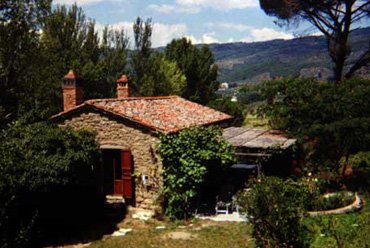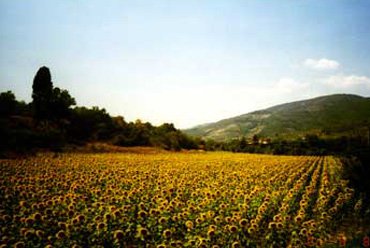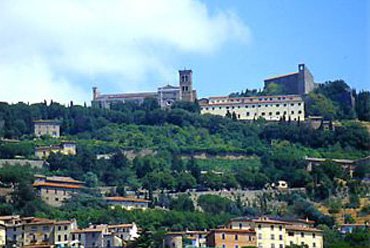Nearby


You can observe nature in its undisturbed state, yet you are only 1000 feet from a small picturesque Tuscany village, where you can purchase fresh eggs, wine or virgin olive oil directly from the farmers.

Castiglion Fiorentino
This wonderful medieval town, founded by the Etruscans, offers a cultural adventure as well as many culinary delights located along its narrow streets and passageways.

Cortona
Visiting and getting to know this charming town (you may know it if you saw the movie "Under the Toscan Sky", which was filmed here) is like a trip into the past. Cortona not only shows its history but also offers a gorgeous view over lake Trasimeno and the Chiana-Valley.
History of the valley "Val di Chio"
The wonderfully green valley "Val di Chio", home to our mill, stretches over a length of around 7km and a breadth of around 3km. It lies 25km south of today's regional capital of Arezzo, once an important, old Etruscan town.
Its fertile plains, used for cultivating maize, sunflowers, grain, wine and vegetables, is surrounded by hills of up to 1,000m high. They give the valley its luscious green as they are densely forested with oak trees, sweet chestnuts, cypress trees and olive trees: a paradise for hikers, cyclists, mushroom gatherers, painters... right on our doorstep.
Even in Etruscan times (from 3000 b.c.) the Val di Chio represented an importance connection between the Tiber valley and Arezzo. In the Bronze Age, trade both to and from the Adriatic Sea was bustling. Watchtowers and castles were later built along this important trade route for protection.
Benefited by the huge abundance of water stemming from various sources, the valley was, and still is, of great significance to palmers and pilgrims. Churches, monasteries and living quarters were erected at the springs. Today, the Val di Chio is still home to 30 churches. Our village church, Santa Maria in Pieve di Chio, was first noted in the records in 1064.
Since the 14th century, the abundance of water was also used to power hydraulic mills for grinding maize, grain and olives. By 1564, 22 mills had been registered in the valley. This is why the street running alongside the valley is still called the "street of antique mills".

